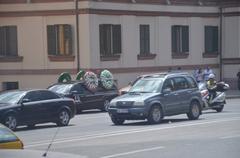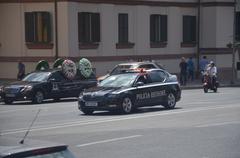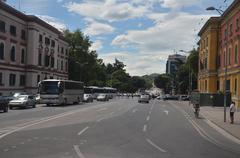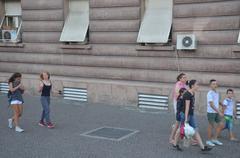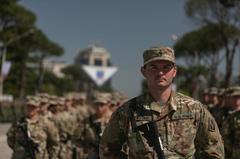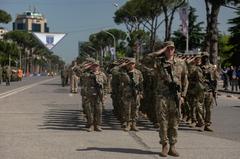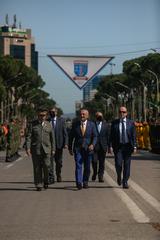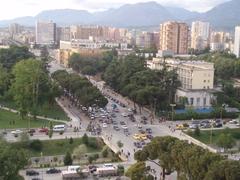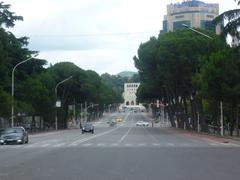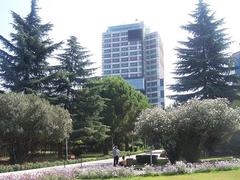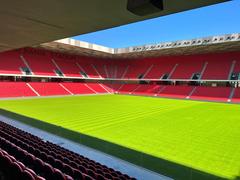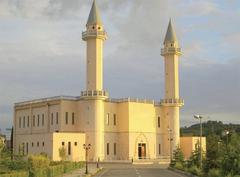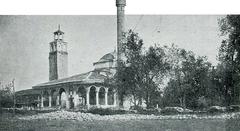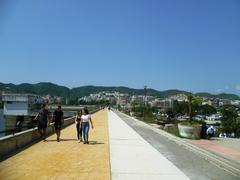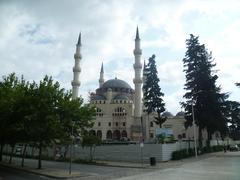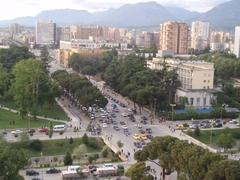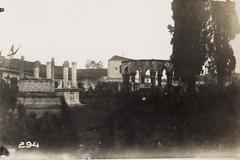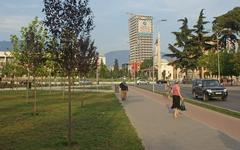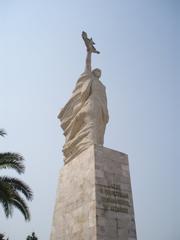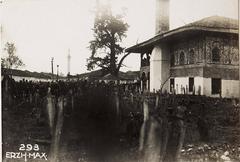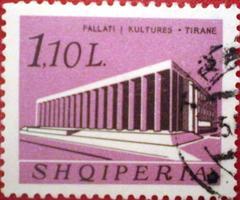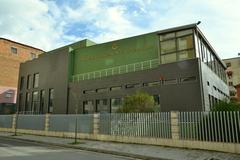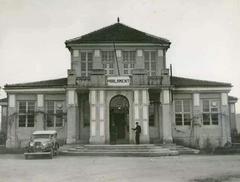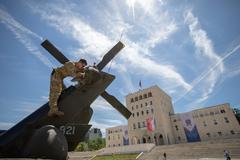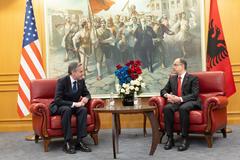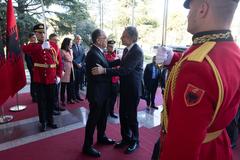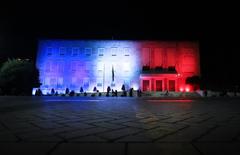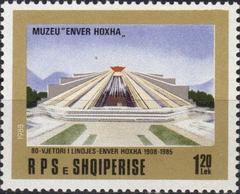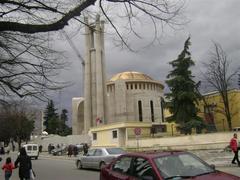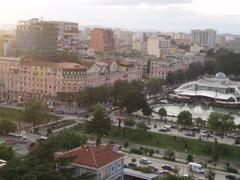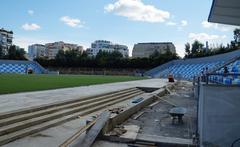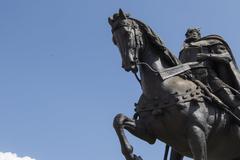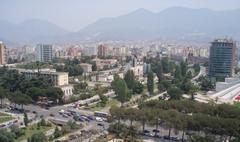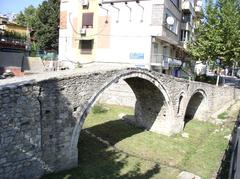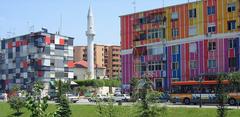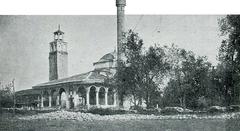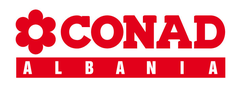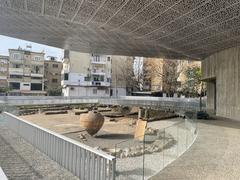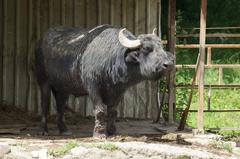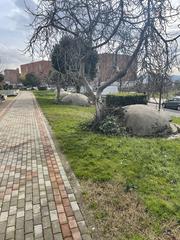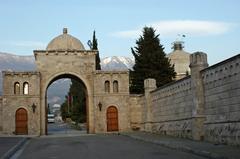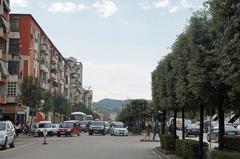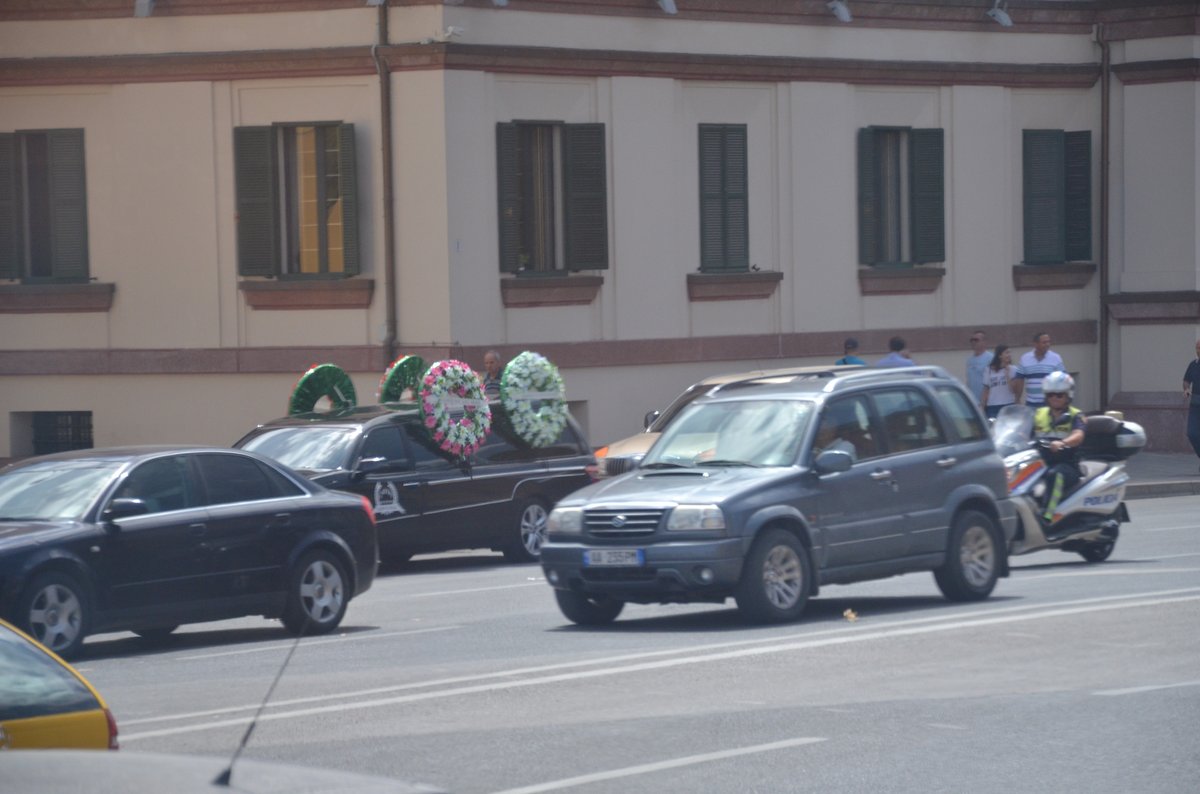
Dëshmorët E Kombit Boulevard: Visiting Hours, Tickets, and Top Attractions in Tirana
Date: 14/06/2025
Introduction
Dëshmorët e Kombit Boulevard, or “Boulevard of the Nation’s Martyrs,” is the grand ceremonial avenue running through the heart of Tirana, Albania. It seamlessly connects the city’s political, cultural, and social life, serving as a living chronicle of Albania’s journey from monarchy to modern democracy. This comprehensive guide provides essential information for visitors, covering the boulevard’s history, architectural landmarks, visiting hours, ticketing details, accessibility, travel tips, nearby attractions, and practical advice for an unforgettable experience. Whether you are an architecture enthusiast, a history buff, or a first-time traveler to Tirana, this article will help you make the most of your visit.
Table of Contents
- Introduction
- Historical Background
- Architectural Highlights and Landmarks
- Practical Visitor Information
- Key Nearby Attractions
- Civic Life, Events, and Traditions
- FAQ: Dëshmorët e Kombit Boulevard
- Travel Tips and Local Customs
- Summary and Call to Action
- References
Historical Background
Origins and Early Development
Dëshmorët e Kombit Boulevard was conceived in the early 20th century, as Albania sought to affirm its identity following independence from Ottoman rule. Designed by Italian architects Armando Brasini and Gherardo Bosio, the boulevard’s rationalist and neoclassical lines reflect European influences and Albania’s aspirations for modernity (facts.net). Construction began in the 1920s and 1930s as part of King Zog I’s vision to establish Tirana as Albania’s political and cultural nucleus.
Symbolism and Name Changes
The boulevard’s name and function have mirrored Albania’s shifting political landscape. Under Italian occupation (1939–1943), it became “Viale del Impero” (Boulevard of the Empire), symbolizing fascist dominance. Following World War II, the communist regime renamed it “Dëshmorët e Kombit Boulevard” to honor the martyrs of Albania’s anti-fascist resistance. This name endures, cementing its role as a place of national commemoration and civic pride (facts.net).
Architectural Highlights and Landmarks
Dëshmorët e Kombit Boulevard is a showcase of Tirana’s layered architectural heritage. Notable landmarks include:
- Presidential Palace: Once the Royal Palace, now the official residence of Albania’s president. Its neoclassical facade is a prominent sight, though not open for public tours (Wikipedia).
- Prime Minister’s Office: An elegant Italianate building representing the boulevard’s administrative core (Everything Explained Today).
- Palace of Congress: A modernist structure from the communist era, now hosting conferences and cultural events. Tickets for events are available online or at the venue.
- University of Tirana: Located at the southern end, this academic complex is a symbol of Albania’s educational aspirations (Cestee).
- Pyramid of Tirana: Once a museum dedicated to Enver Hoxha, now a cultural center and urban landmark, open daily with free entry (Evendo).
- National Art Gallery: Houses a significant collection of Albanian art; open Tuesday to Sunday, 10:00 AM to 6:00 PM (Tirana.al).
The boulevard’s tree-lined promenades, public art, and historic bridges—like Gjovalin Gjadri’s 1935 crossing—add to its architectural and aesthetic appeal (Wikipedia).
Practical Visitor Information
Visiting Hours and Accessibility
- Boulevard Access: Open 24/7 as a public thoroughfare (Evendo).
- Key Landmarks:
- National Art Gallery: Tues–Sun, 10:00 AM–6:00 PM
- Pyramid of Tirana: Daily, 9:00 AM–7:00 PM
- University of Tirana: Campus accessible during regular hours (8:00 AM–6:00 PM)
- Accessibility: Wide, well-maintained sidewalks make the boulevard wheelchair and stroller friendly. Most major sites are equipped with ramps; some older buildings may have limited access.
Tickets and Guided Tours
- Boulevard: Free to access at all times.
- Museums/Galleries: Modest admission fees apply (e.g., 300 lek at the National Art Gallery).
- Guided Tours: Local tour operators and tourist offices offer walking tours focused on history, architecture, and culture. Book in advance or inquire at tourism centers (Rough Guides).
Best Times to Visit
- Spring (April–June) and Autumn (September–October) offer ideal weather and thinner crowds.
- Early mornings or late afternoons are best for photography and a relaxed atmosphere.
Key Nearby Attractions
- Skanderbeg Square: Tirana’s main plaza, the starting point for exploring the boulevard.
- Grand Park of Tirana: At the southern end, a green oasis with walking trails and an artificial lake (Rough Guides).
- Blloku District: Formerly reserved for Communist elites, now a hotspot for nightlife, dining, and shopping (Rough Guides).
- National History Museum: At the northern end, open daily 9:00 AM–5:00 PM, entrance fee ~200 lek.
- Et’hem Bey Mosque and Clock Tower: Historic Ottoman landmarks near Skanderbeg Square.
Civic Life, Events, and Traditions
Dëshmorët e Kombit Boulevard is a dynamic social space. It hosts:
- National Celebrations: The boulevard is adorned with Albanian flags and decorations on holidays like Independence Day and Liberation Day (Cestee.hu).
- Martyrs’ Day Marathon (May 5): A major annual event honoring Albania’s fallen heroes (Events1000.com).
- Public Parades, Concerts, and Exhibitions: Regularly held in the boulevard’s open spaces.
- Evening “Xhiro”: A cherished Tirana tradition where locals stroll the boulevard after sunset (Everything Explained Today).
FAQ: Dëshmorët e Kombit Boulevard
Q: Is there an entry fee for the boulevard?
A: No, access is free. Fees may apply for museums or special events.
Q: Are guided tours available?
A: Yes, local operators offer historical and cultural walking tours.
Q: Is the boulevard suitable for wheelchairs and strollers?
A: Yes, sidewalks are wide and smooth; most major attractions are accessible.
Q: What public transport serves the boulevard?
A: Buses and taxis are readily available. The central location allows easy access on foot from Skanderbeg Square (Evendo).
Q: When is the boulevard most lively?
A: Evenings, weekends, and during public holidays or events.
Travel Tips and Local Customs
- Safety: Tirana is generally safe, but watch for pickpockets during crowded events (Wander-Lush).
- Dress Code: Casual but respectful; modest attire required in religious sites.
- Language: Albanian is official, but English is widely understood in tourist areas.
- Payments: Credit cards are accepted in many places, but carry cash for small purchases.
- Photography: Early morning and sunset provide the best light; ask before photographing people or sensitive locations.
Summary and Call to Action
Dëshmorët e Kombit Boulevard is an essential destination for anyone exploring Tirana. Blending monumental architecture, vibrant social life, and national memory, it stands as a symbol of Albania’s dynamic past and present. Take a leisurely stroll, visit key landmarks, enjoy local cuisine, and witness Tirana’s spirit unfold along this historic avenue.
For guided experiences, event updates, and interactive resources, download the Audiala app. Stay connected with our latest travel articles and follow us on social media for tips and inspiration. Plan your journey through Albania’s capital—beginning with its most celebrated boulevard.
